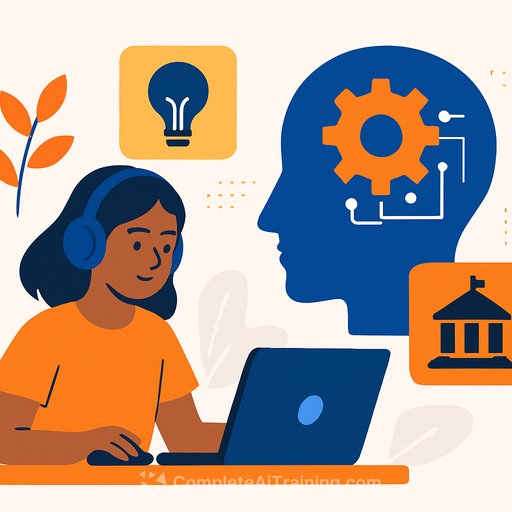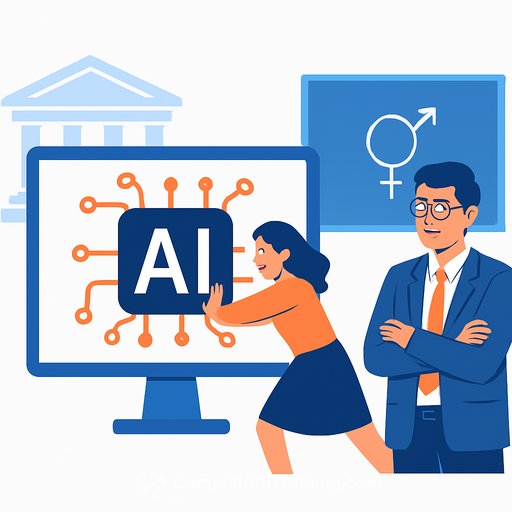Generative AI in Education: Early Adoption, Equity, and the Road Ahead
Students are trying generative AI before the adults around them. That gap has real implications for curriculum, access, and how schools guide responsible use.
A national study supported by the National Science Foundation surveyed more than 4,000 adolescents and gathered perspectives from parents and teachers. The data offers a clear signal: youth curiosity is outpacing adult adoption.
Key Findings
- Adoption among adolescents: 45 percent of students ages 9-17 used tools like ChatGPT in the past month; only 7 percent used them daily. Use of specialized AI tools (virtual friends, mental health chatbots) remains low.
- Perceived impact: 69 percent of adolescent users said AI helped them learn something new. Fewer than 6 percent reported negative social or academic effects.
- Adult usage lags: Only 25 percent of parents reported using generative AI tools. Educators vary widely in familiarity and comfort.
- Equity in access: No significant differences in AI adoption were found between lower- and higher-income teens-an encouraging sign for access, with caveats on quality and support.
What this means for school leaders
Students are experimenting, often without structured guidance. Schools have a window to set norms, teach AI literacy, and reduce risk without stifling curiosity.
Policy, professional learning, and classroom routines need to meet students where they already are-using AI for writing help, ideas, and quick answers. The goal: informed use, not blind adoption or blanket bans.
5 Action Items for Educators
1. Stay informed
Know the tools students use and why. They span educational AI tutors and writing assistants, creative apps for art and music, social filters and bots, gaming add-ons, and AI-powered mental health tools.
- Educational platforms (AI tutors, writing assistants)
- Creative tools (AI art, music, video)
- Social media filters and bots
- Gaming enhancements
- Mental health apps (mood tracking, support)
Benefits include personalized support, creative expression, and accessibility. Risks include misinformation, overreliance, privacy issues, and biased or harmful outputs.
Actionable tip: Track updates via school communications and youth-focused digital literacy sources. The U.S. Department of Education's guidance on AI is a strong starting point: Artificial Intelligence and the Future of Teaching and Learning.
2. Engage in dialogue
Talk with students early and often. Ask: "What AI tools do you use most?" "How do they help?" "What felt off or confusing?"
These conversations surface use cases, assumptions, and emotions adults might miss. They also build trust and openness.
Actionable tip: Set up recurring check-ins-advisory periods, homeroom circles, or family tech talks-to normalize discussions about AI.
3. Promote responsible use
Teach how these systems work at a high level-patterns, training data, and probabilities. Pair that with critical reading, bias detection, and citation norms.
Set clear rules on academic integrity and originality. Make space for AI-assisted drafting while assessing individual thinking.
Actionable tip: Embed AI literacy into media literacy and writing instruction. Align class policies with district guidance and the National Science Foundation emphasis on responsible innovation.
4. Monitor equity
Access rates may look similar across income groups, but quality of access can differ. Devices, bandwidth, and support matter just as much as tool availability.
- Close gaps in devices and connectivity
- Expand AI-enhanced learning opportunities equitably
- Audit tools for language and cultural bias
Actionable tip: Advocate for funding that covers infrastructure, teacher PD, and student access outside school. Partner with libraries and community centers for shared resources and training.
5. Support ongoing research
Student use is moving quickly. Schools benefit from timely data on usage patterns, learning outcomes, and well-being.
Sharing real classroom stories helps researchers and policymakers shape responsible guidance.
Actionable tip: Join research-practice networks, pilot studies, or district working groups. If you're building staff capacity, explore curated options by role: AI courses by job.
Looking ahead
Adolescents are experimenting with AI at meaningful rates, reporting more upside than downside. The opportunity for schools is clear: teach discernment, define boundaries, and widen access to quality tools.
Progress will come from coordination between educators, developers, and policymakers. Keep listening to students, updating policy, and testing practical routines that make learning better-not noisier.
Your membership also unlocks:






